Proper Lubrication of the AR-15
The AR-style rifle is based on the American military’s sweetheart service rifle, the M16. Anyone that has been in the military can tell you a great many things about the platform and what it will keep it running.
One of the biggest things that you will be told is that it needs to stay lubricated. Coming from the military myself, yes in a sense it does need to stay lubricated in certain areas. But not lubricating it for 1000 rounds will hardly make it seize up. The thing you don’t wanna do is make a habit of running it dry and dirty.
Other than that, let’s go over how to lubricate the AR-style rifle.
How to Lubricate the AR-Style Rifle
In this article, I am going to refer to the AR platform as the M16/4 platform since AR actually stands for “Armalite Rifle,” and calling every one of these rifles AR’s is like calling every vehicle a Honda. Also, that is what these types of rifles are trying to be, aside from minor petty changes here and there to try to be unique.
The M16/4 is one of the easiest rifle platforms to lubricate in the sense that only one part really needs to be lubricated. You don’t really even need to open the rifle up in order to lubricate it.
When I was in, I wouldn’t open it up to lubricate it, unless I needed to clean it. But this was because I was just lazy, not really for any good reason to speak of at the time. It isn’t bad to not open the gun up to lubricate it, but it isn’t necessary to have it apart to lubricate it.
if you need to clean your AR platform, Check out our guide to Best Gun Cleaning Kits.
The one part of the gun that actually needs lubricating, and is the key to the entire platform in my opinion, is the bolt carrier group. Now some of you are going to say that it isn’t just one part, but in this case and topic, we are going to consider it as one.
When you look at how the traditional M16/4 direct impingement system works, you are getting a huge volume of gasses and fouling being plunged right into the heart of the bolt carrier. This is actually the part of the design that makes people like me slap their head when they think about how the gun is basically designed to crap on itself with every shot. Imagine if your exhaust system just routed all the exhaust right back into the engine.
How well do you think that would go? Probably not that great, right?
Now with your newer gas piston systems, lubrication is going to be similar but without the same concerns and concentrations, since you won’t have to be as liberal.
One of the first things I was told about oiling the M16/4 in boot camp that goes across all sister platforms is the fact that the platforms like to run wet. We were told that when in doubt, be liberal with the CLP we were issued.
Type of Lubricant
The type of lubricant is another subject entirely, but I recommend a liquid CLP for a couple of reasons.
First is the fact that it does everything for you. It will actively prevent fouling and keep the fouling wet, negating the need for a designated cleaner. CLPs typically are designed to condition the metal, making it easier to clean with subsequent cleaning and lubrication cycles.
You can also use grease in some parts of the rifle, which I will point out as well. I personally use Slip2000 EWL and EWG for my guns. Their grease is made from their EWL, but with a thickener. This is good because you don’t have to worry about mixing different chemicals, and you can even mix the grease with the EWL liquid to create your desired consistency.
If you are still unsure, we reviewed the Best AR-15 Lube for you here.
How much Lubricant Should you Use?
One thing I want you to remember about this platform is that you can be liberal with your lubricant of choice. I know there will be lube Nazis out there that will say that it will attract all this evil matter that will cause your rifle to collapse and die on you in the middle of shooting. Just let me say that this is ridiculous at best. I ran a liberally lubed M16A4 during several sandstorms with government issued CLP, to the point that it sprayed CLP in my face when I shot it during firefights. It never once had an excessive amount of sand in it from this, nor did it ever malfunction.
This is because the platform is designed to be a sealed system with only one way into the action. Aside from putting a handful of dirt in the trigger group, the rifle is going to remain sealed and last through the crap conditions anywhere in the world, hence its long service life and the fact that we can’t find a suitable replacement so far in our military.
AR-15 Lubrication Points
Now onto the lubrication areas. For this demonstration, I am going to show the bolt group and the inside of the Windham Weaponry rifle(WW15) I have, in order to illustrate the areas I am talking about. I want to emphasize again that all these points are capable of getting proper lubrication without opening the gun up and taking it apart.
The parts that need to have lube applied are the following areas:
- Circumference of the bolt
- Ejector plunger
- Bolt locking lugs
- Bolt Cam pin
4 points outside of the bolt carrier
4 points of friction outside of the bolt carrier. These have very consistent and constant contact with the upper receiver and need to run smoothly for reliable functioning. This would be a good grease candidate if you wish to use grease instead.
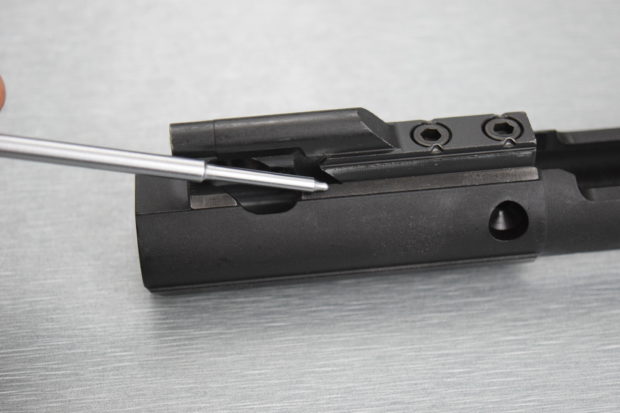
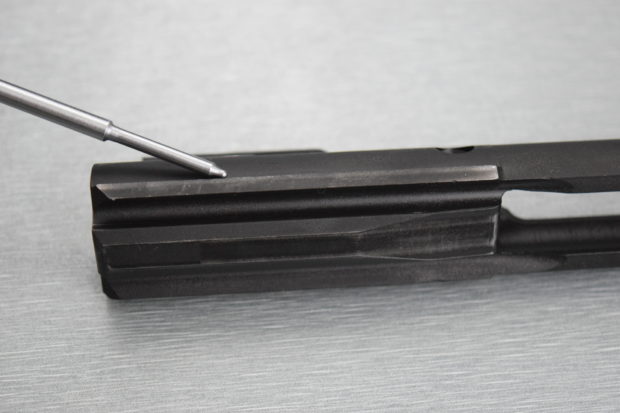
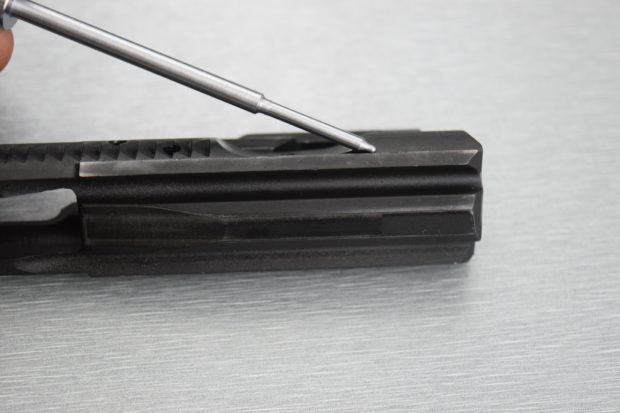
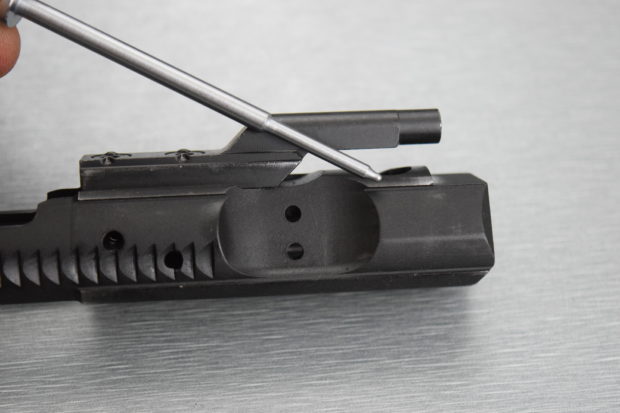
Circumference of the bolt.
This will help with ensuring reliable lockup of the bolt in and out of battery, even through the immense fouling that this system can generate under firing.
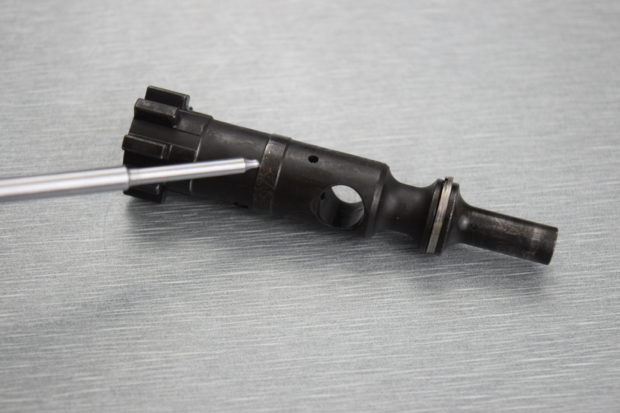
Ejector plunger.
This will assist in giving the ejector long life, but only needs to be done every once in a while, since it isn’t very exposed to fouling.
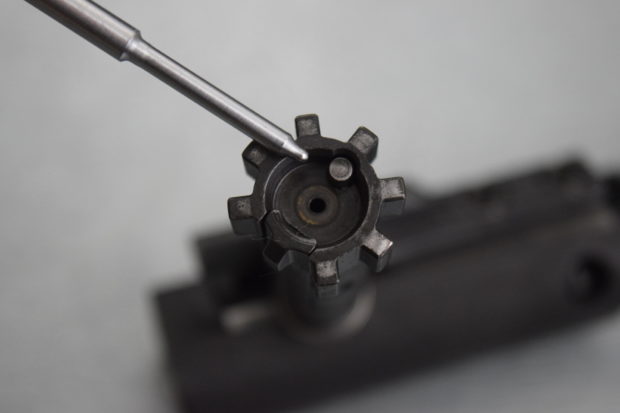
Bolt locking lugs. These parts are very prone to cracks, chips, and fractures, but can be given an extended life by simply oiling them and keeping them well lubricated.
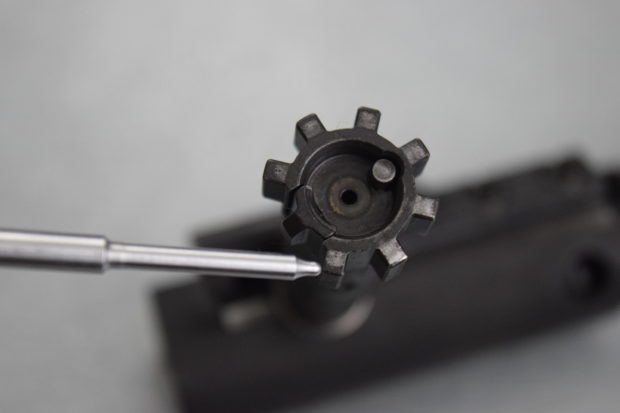
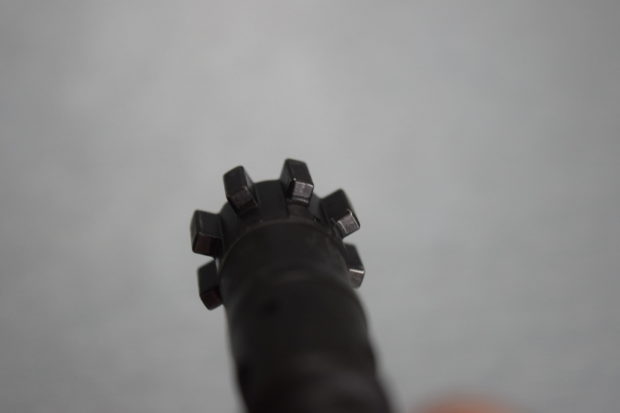
Bolt Cam pin.
This piece is responsible for your bolts smooth locking and unlocking. As you can see, it bears a huge brunt of the wear, so remember to generously lubricate this part. If you wish, this would be a prime candidate for a generous amount of grease as well. But you will have to break down the rifle in order to grease this part, unfortunately. Liquid lube with work just as well though, so no worries.
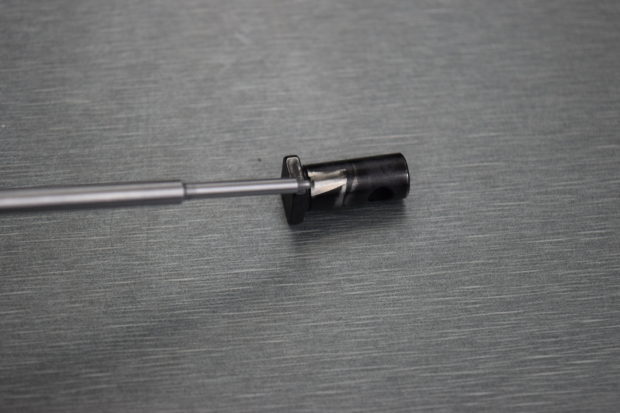
The areas just shown can easily be reached with liquid lubricant without actually having to remove the bolt carrier group from the rifle. Of course, the method of getting these parts lubricated may not be pretty and direct, but you will still come away with a well-lubricated and smooth action. Just remember that a little goes a long way in most places. Here are some pictures showing the exposed areas. I will show you how to begin lubricating with the bolt locked to the rear:
Bolt friction points from the magazine well with bolt locked to the rear. I would tilt the rifle muzzle upward when lubing these points just so the lubricant will run down the friction paths. Just keep in mind that these points don’t need too much lubricant, but it won’t hurt if you’re a bit generous. You can also apply grease to these points with your finger if you wish, but this is the only point you can grease in this manner.
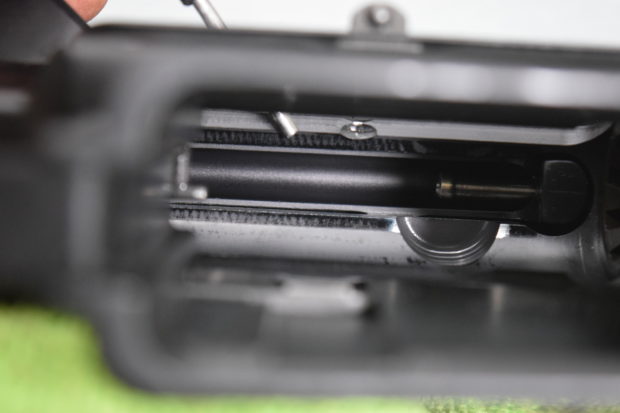
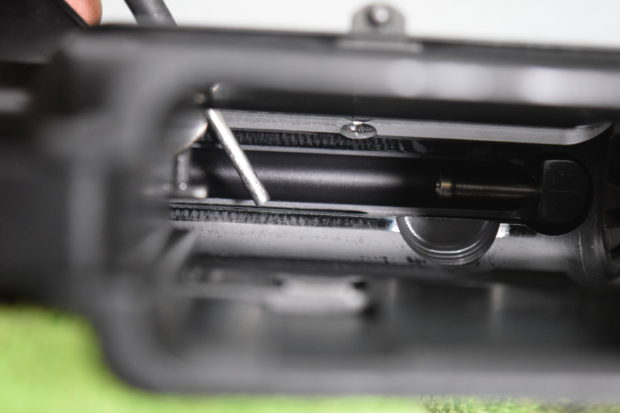
Ejector plunger with bolt locked to the rear, also showing another friction point for the bolt. One drop here should do, so don’t be too liberal here. Remember that the ejector only needs lubrication once in a while, but the friction path near it in the picture needs it constantly.
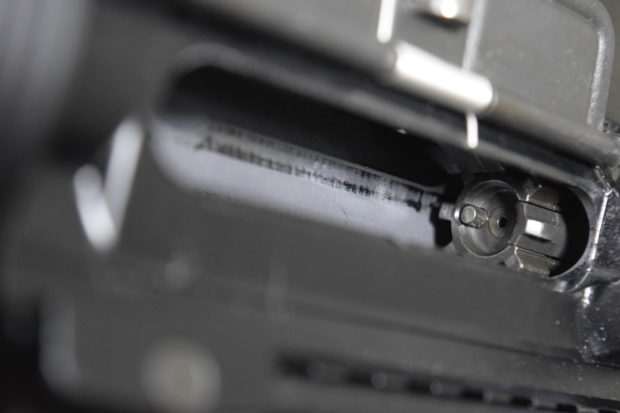
Liberally lubricate locking lugs on bolt from this position, or with bolt slightly out of battery. Then work the action vigorously to get it into all the appropriate areas.
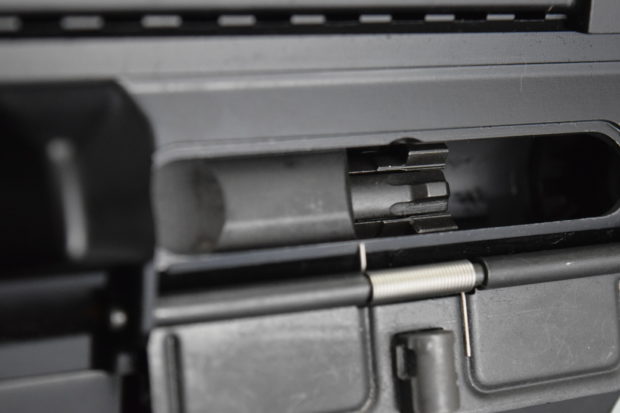
Liberally lubricate through these two holes and vigorously work the action several times to generously lubricate the bolt circumference and the bolt cam pin. Here, it is fine to be liberal with your lubricant. A needle applicator works very well for this. This is the area where all the excess gas from the DI is going to vent out, and this is the area where 90% of the nasty firing residue buildup collects. This is why a good CLP will do wonders. Let it work on cleaning the buildup while you worry about shooting.
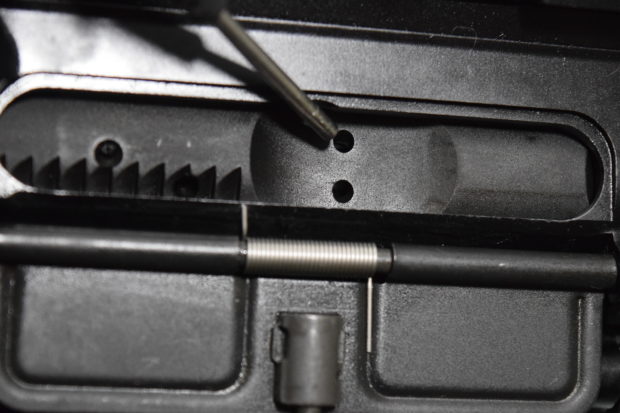
Final Thoughts
In my experience, these have been the only areas on the rifle that really need to be oiled. With this method you are directly attacking the friction points and you don’t have to be too liberal with the lubrication, or break down the rifle at all. The main thing to remember is that yes, the M16/4 platform likes to run wet generally, but it isn’t necessary all the time.
The only area I run wet is through the last area shown with the 2 vents. My advice to you, to shorten your cleaning time is to liberally pour CLP through the vents and work the action several times right after a shooting session, just to let the CLP start working on the fouling that no doubt has collected. Other than that, there really isn’t much else to know, except little fine lube points here and there to help the trigger or just lube certain springs, but that is another subject entirely. Hope this gives you a better understanding of how easy it really is to keep your AR-style rifle functioning smoothly

